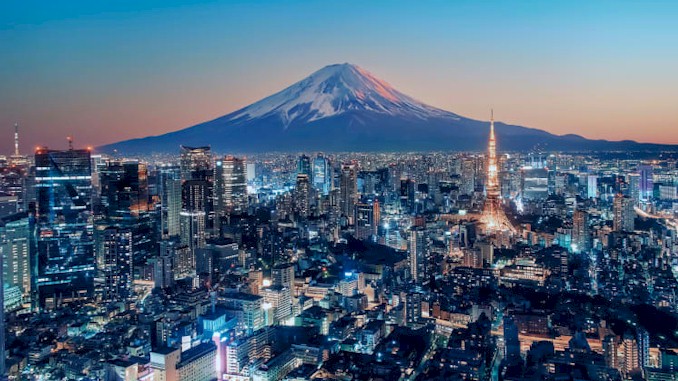Planning a Trip to Tokyo: Beginner’s Guide
I’m currently planning a trip to Tokyo, and I know how stressful it can be. However, after a while, I discovered some great tips to plan your dream vacation to Tokyo. In this article I’ll share those tips with you to help your trip.
Planning a trip to Tokyo requires careful consideration of several key factors, including the best time to visit, the most affordable accommodations, and the city’s intricate transportation system. To start, it’s important to choose a time that aligns with your interests and preferences. Tokyo has something to offer year-round, but the cherry blossom season in spring and the autumn foliage in November are particularly popular. Once you have a timeframe in mind, it’s time to consider your accommodation options, ranging from budget-friendly hostels to luxurious hotels. Lastly, Tokyo’s transportation system can be overwhelming, but with a bit of preparation, it’s easy to navigate.
Planning a trip to Tokyo can be an exciting and rewarding experience, but it can also be a bit daunting. That’s why I’ve compiled a comprehensive guide to help you make the most of your time in this vibrant city. In the following paragraphs, I’ll delve into more detail on each of the key factors to consider when planning a trip to Tokyo. I’ve got all the insider knowledge you need to create an unforgettable Tokyo itinerary. So keep reading, and let’s get started on planning your dream trip to Tokyo!
Choosing the Best Time to Visit Tokyo: A Seasonal Guide
I can confidently tell you that Tokyo is worth visiting at any time of year. However, depending on your interests and preferences, some seasons may be more suitable for your trip than others. To help you make the most of your time in Tokyo, here’s a seasonal guide on choosing the best time to visit:
Spring (March – May): Spring is a popular time to visit Tokyo due to the iconic cherry blossom season, which typically occurs in late March to early April. During this time, the city’s parks and streets are adorned with beautiful pink blooms, creating a picturesque backdrop for sightseeing and outdoor activities. However, be prepared for crowds and higher prices during this peak season. If you prefer a quieter atmosphere, visiting in late May when the cherry blossoms have faded can be a great alternative.
Summer (June – August): Summer in Tokyo can be hot and humid, with temperatures often exceeding 30°C (86°F). However, the season also offers unique cultural experiences such as traditional festivals, fireworks displays, and outdoor markets. Be sure to pack light, breathable clothing and stay hydrated during your visit. August is the peak of the summer season and features the Obon Festival, a time when locals honor their ancestors with dance and music.
Fall (September – November): Fall is a comfortable and colorful season to visit Tokyo, with cooler temperatures and stunning autumn foliage. Late November is a popular time for tourism as it coincides with the foliage season. However, visiting in early November can be a great alternative to avoid the crowds while still enjoying the beauty of fall colors.
Winter (December – February): Winter in Tokyo is cold and dry, with temperatures ranging from 5-15°C (41-59°F). However, it is also the time for illuminations, or light displays, which are a popular attraction across the city. Additionally, winter is a great time to enjoy winter sports like skiing and snowboarding in nearby mountain resorts. Be sure to pack warm clothing and prepare for shorter daylight hours.
Overall, choosing the best time to visit Tokyo depends on your preferences and interests. While each season has its own unique charm, it’s important to consider factors such as weather, crowds, and pricing. Regardless of when you decide to visit, Tokyo is sure to impress with its vibrant culture, modern technology, and rich history.
Navigating Tokyo’s Transportation System: Tips and Tricks
Navigating Tokyo’s transportation system can seem daunting at first, but with a little preparation and knowledge, it’s actually quite easy to get around the city. Here are some tips and tricks to help you navigate Tokyo’s transportation system:
- Get a Suica or Pasmo card: A Suica or Pasmo card is a prepaid, rechargeable card that allows you to easily pay for public transportation fares without having to purchase tickets each time you ride. These cards can be purchased at ticket vending machines and can be used on trains, buses, and subways throughout Tokyo.
- Learn the train lines: Tokyo has an extensive train network, so it’s important to familiarize yourself with the different train lines and their routes. The Tokyo Metro and JR East websites have maps and schedules that can be helpful for planning your route.
- Take advantage of the subway: The Tokyo subway system is efficient and can save you time and money compared to taking a taxi or bus. Additionally, subway stations often have signs and announcements in both Japanese and English, making it easy for foreigners to navigate.
- Avoid rush hour: Tokyo’s rush hour is notoriously busy and can be overwhelming for first-time visitors. To avoid the crowds, try to travel during off-peak hours or use alternative transportation like taxis or bikes.
- Use Google Maps: Google Maps is a useful tool for navigating Tokyo’s transportation system, as it provides real-time information on train schedules and routes. Just be sure to double-check the information with station attendants, as Google Maps isn’t always 100% accurate.
By following these tips and tricks, you’ll be able to navigate Tokyo’s transportation system like a pro. In the following sections, we’ll delve into more detail on other key factors to consider when planning your trip, such as finding affordable accommodations and must-see attractions.
Finding an Affordable Accommodation in Tokyo: A Comprehensive Guide
When it comes to finding affordable accommodation in Tokyo, it’s important to do your research and consider all of your options. In addition to hostels and capsule hotels, there are also budget hotels, guesthouses, and even homestays that can be more affordable than traditional hotels. It’s important to consider the location of your accommodation as well, as areas like Shinjuku and Shibuya tend to be more expensive. Looking for accommodation a bit further out from the city center can also save you money.
One option for finding affordable accommodation in Tokyo is to look for budget hotels. These hotels are typically smaller and more basic than larger hotels, but can provide a comfortable and affordable stay. Some budget hotels even offer amenities like free breakfast and WiFi. It’s important to read reviews and check the hotel’s website for pricing and availability.
Another option is to consider staying in a guesthouse or hostel. These types of accommodations offer shared living spaces and a communal atmosphere. Hostels often have dormitory-style rooms with bunk beds, while guesthouses can offer private rooms or shared rooms with other travelers. Both options are a great way to meet other travelers and can be more affordable than traditional hotels.
If you’re looking for a unique experience, consider booking a homestay. Homestays are when travelers stay with a local family, allowing them to experience the local culture and way of life. Homestays can be more affordable than hotels, but it’s important to research and vet the family before booking. Websites like Airbnb and Homestay.com offer a range of homestay options in Tokyo.
Location is also an important factor when it comes to finding affordable accommodation in Tokyo. Areas like Shinjuku and Shibuya tend to be more expensive, while areas further out from the city center can offer more affordable options. Neighborhoods like Asakusa and Ueno are known for their affordable accommodation options and also offer easy access to popular attractions.
Finally, it’s important to book your accommodation well in advance to ensure the best prices and availability. Prices can increase as availability decreases, especially during peak travel season. By being strategic and flexible, you can find affordable accommodation in Tokyo that meets your budget and needs.
Must-See Attractions in Tokyo: From Iconic Landmarks to Hidden Gems
Tokyo is a city with something for everyone, from iconic landmarks to hidden gems waiting to be discovered. Here are some must-see attractions to add to your Tokyo itinerary:
- The Tokyo Tower: The Tokyo Tower is one of the most iconic landmarks in the city and offers stunning views of Tokyo from its observation decks. Visitors can also enjoy dining and shopping at the base of the tower.
- Sensoji Temple: Sensoji Temple is one of Tokyo’s oldest and most significant temples, located in the Asakusa neighborhood. The temple grounds are home to several beautiful buildings, including the main hall and a five-story pagoda.
- Tsukiji Fish Market: The Tsukiji Fish Market is the largest fish market in the world and a must-visit for foodies. Visitors can watch the fish auction in the early morning or enjoy fresh sushi at one of the many restaurants in the market.
- Meiji Shrine: The Meiji Shrine is a peaceful oasis in the middle of the city, located in a lush forested area in Shibuya. Visitors can explore the shrine’s beautiful architecture and learn about the history and culture of Japan.
- Shinjuku Gyoen National Garden: The Shinjuku Gyoen National Garden is a stunning park in the heart of Tokyo, featuring a variety of gardens, including a traditional Japanese garden, a French garden, and an English garden.
- Harajuku: Harajuku is a neighborhood known for its unique fashion and youth culture. Visitors can explore the many boutiques and cafes along Takeshita Street, or relax in the tranquil surroundings of the Meiji Shrine.
These are just a few of the many must-see attractions in Tokyo. From historic landmarks to modern shopping districts, there is something for everyone in this vibrant city. Whether you’re a first-time visitor or a seasoned traveler, Tokyo is sure to leave a lasting impression.
Learning Japanese for Your Trip to Tokyo: Essential Phrases and Tips
Here are some essential Japanese phrases and their meanings that can help you during your trip to Tokyo:
- こんにちは (Konnichiwa) – Hello
- ありがとう (Arigatou) – Thank you
- すみません (Sumimasen) – Excuse me/I’m sorry
- どこですか?(Doko desu ka?) – Where is it?
- メニュー (Menyuu) – Menu
- お願いします (Onegaishimasu) – Please
- いくらですか? (Ikura desu ka?) – How much does it cost?
- はい (Hai) – Yes
- いいえ (Iie) – No
- ごめんなさい (Gomen nasai) – I’m sorry
In addition to these phrases, learning some basic Japanese characters like Hiragana and Katakana can also be useful when reading signs or menus. It’s also worth noting that many Japanese people are familiar with English and may be able to communicate with you in basic English if necessary. However, making the effort to learn some Japanese phrases can help show respect and enhance your overall travel experience in Tokyo.







